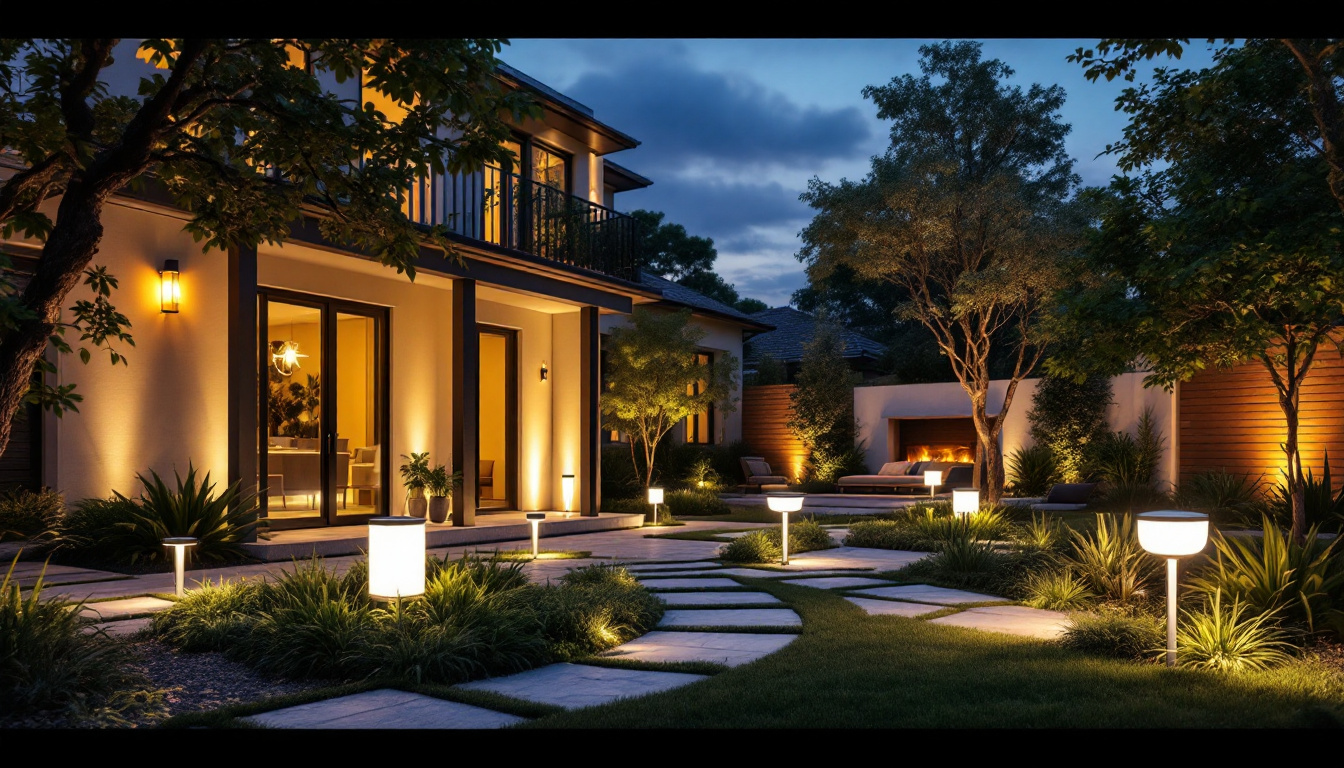
In the world of commercial lighting, ceiling fans often play a crucial yet overlooked role. While they are primarily designed for air circulation, their impact on energy efficiency, comfort, and aesthetic appeal in commercial spaces cannot be underestimated. For lighting contractors, mastering the integration of commercial ceiling fans into their projects can enhance their service offerings and elevate client satisfaction. This article explores the various aspects of commercial ceiling fans that lighting contractors should understand to excel in their field.
Ceiling fans serve multiple purposes in commercial environments, making them an essential component of any lighting contractor’s toolkit. Understanding their significance can help contractors make informed recommendations to clients.
One of the primary advantages of installing ceiling fans in commercial spaces is their ability to enhance energy efficiency. By circulating air, ceiling fans can help maintain a comfortable temperature, reducing the reliance on heating and cooling systems. This is particularly beneficial in large spaces where temperature control can be challenging. When paired with energy-efficient lighting solutions, ceiling fans can significantly lower energy costs, making them an attractive option for budget-conscious clients. Furthermore, many modern ceiling fans come equipped with smart technology that allows for remote control and programmable settings, enabling businesses to optimize their energy usage even further. This integration of technology not only contributes to sustainability efforts but also appeals to a growing demographic of environmentally conscious consumers.
Comfort is paramount in any commercial setting, whether it’s an office, retail space, or restaurant. Ceiling fans contribute to a more comfortable environment by promoting airflow, which can help regulate temperatures and improve overall air quality. In spaces with high ceilings, fans can effectively distribute warm air during colder months, creating a more pleasant atmosphere for occupants. Lighting contractors can emphasize this benefit when discussing options with clients, highlighting how ceiling fans can enhance the overall experience of their space. Additionally, the presence of ceiling fans can help mitigate the effects of stuffiness that often occurs in crowded areas, ensuring that patrons or employees remain comfortable even during peak hours. This attention to comfort can lead to increased productivity and customer satisfaction, which are crucial for the success of any commercial endeavor.
Beyond functionality, ceiling fans also add an aesthetic element to commercial interiors. Available in various styles, sizes, and finishes, they can complement the overall design theme of a space. Lighting contractors should be well-versed in the different design options available, as this knowledge can help them guide clients in selecting fans that not only meet their practical needs but also enhance the visual appeal of their environments. For instance, a sleek, modern fan can elevate the ambiance of a contemporary office, while a rustic wooden fan might be the perfect touch for a cozy café. Moreover, with the rise of custom designs and unique finishes, businesses can choose ceiling fans that reflect their brand identity, further enhancing their marketing and customer engagement strategies. This dual role of ceiling fans—as both functional appliances and design elements—makes them a versatile choice for any commercial space.
Selecting the right ceiling fan for a commercial space involves several considerations. Lighting contractors must assess factors such as size, style, and functionality to ensure optimal performance.
The size of the ceiling fan is critical for effective air circulation. A fan that is too small for a large space will struggle to provide adequate airflow, while an oversized fan in a small room can create an uncomfortable breeze. Lighting contractors should be familiar with the guidelines for fan size based on room dimensions. Generally, a fan’s diameter should be proportional to the size of the room, and it’s essential to consider the height of the ceiling as well.
When it comes to style, commercial ceiling fans come in a wide range of designs, from sleek modern options to more traditional styles. The choice of fan should align with the overall design aesthetic of the space. For instance, a contemporary office may benefit from a minimalist fan, while a rustic restaurant might opt for a more ornate design. Lighting contractors should encourage clients to consider how the fan will fit into the existing decor and whether it will enhance the overall ambiance.
Modern ceiling fans often come equipped with various functionalities that can enhance their usability. Features such as remote controls, smart technology compatibility, and adjustable speed settings can significantly improve user experience. Lighting contractors should be knowledgeable about these features and be prepared to explain their benefits to clients. Additionally, discussing the ease of maintenance and cleaning can help clients make informed decisions regarding their ceiling fan choices.
Proper installation is crucial for the performance and longevity of commercial ceiling fans. Lighting contractors must adhere to best practices to ensure that fans operate efficiently and safely.
The mounting height of a ceiling fan is essential for optimal airflow. Ideally, the fan should be installed at least seven feet above the floor to ensure safety and efficiency. In spaces with high ceilings, using a downrod can help lower the fan to the appropriate height. Additionally, the location of the fan should be carefully considered; placing it in the center of the room allows for even air distribution. Lighting contractors should evaluate the layout of the space before installation to determine the best position for the fan.
Electrical safety is paramount when installing ceiling fans. Lighting contractors should ensure that the electrical box used for mounting the fan is rated to support its weight and motion. Proper wiring is also essential; fans typically require a dedicated circuit to prevent overload. It’s advisable to consult local building codes and regulations to ensure compliance. By following electrical best practices, contractors can help prevent potential hazards and ensure the fan operates safely.
Once installed, balancing the ceiling fan is crucial for smooth operation. An unbalanced fan can lead to wobbling, noise, and premature wear. Lighting contractors should take the time to check the fan’s balance after installation, making adjustments as necessary. This attention to detail not only enhances the fan’s performance but also reflects positively on the contractor’s professionalism.
Dust and debris can accumulate on ceiling fans, affecting their performance and air quality. Lighting contractors should recommend a cleaning schedule to clients, emphasizing the importance of regularly dusting the blades and housing. A simple wipe-down with a damp cloth can help maintain the fan’s appearance and functionality. Additionally, contractors can provide tips on how to safely access fans for cleaning, especially in high-ceiling environments.
Understanding common issues that can arise with ceiling fans is crucial for troubleshooting. Lighting contractors should be prepared to help clients identify problems such as unusual noises, wobbling, or failure to operate. These issues can often be resolved with simple adjustments or repairs. For example, tightening loose screws or balancing the blades can rectify wobbling. By being knowledgeable about potential problems, contractors can offer valuable support to their clients.
While many maintenance tasks can be handled by clients, there are situations where professional assistance is necessary. Lighting contractors should advise clients on when to seek help, particularly if there are electrical issues or complex repairs needed. Providing a reliable point of contact for service can enhance client trust and satisfaction, ensuring they feel supported long after the installation is complete.
For lighting contractors, the integration of ceiling fans with lighting solutions can create a cohesive and functional environment. Understanding how to harmonize these elements can significantly enhance the overall design.
When combining ceiling fans with lighting fixtures, it’s essential to coordinate styles to create a unified look. Contractors should encourage clients to select lighting that complements the design of the fan. For instance, a modern fan may pair well with sleek pendant lights, while a more traditional fan might be better suited to classic chandeliers. By guiding clients in their selections, contractors can help achieve a visually appealing and harmonious space.
Effective lighting design often involves layering different types of lighting to create depth and ambiance. When incorporating ceiling fans, contractors should consider how the airflow from the fan interacts with the lighting. For example, placing lights at varying heights can enhance the effect of the fan’s airflow, creating a dynamic and inviting atmosphere. Contractors should think creatively about how to integrate these elements for maximum impact.
As smart technology becomes increasingly popular, integrating ceiling fans with smart lighting systems can offer clients enhanced control and convenience. Lighting contractors should familiarize themselves with smart fan options that can be controlled via mobile apps or voice-activated devices. This integration not only adds a modern touch but also allows for personalized settings that can adjust both lighting and airflow based on user preferences. Educating clients about these possibilities can set contractors apart in a competitive market.
Mastering the integration of commercial ceiling fans into lighting projects is a valuable skill for lighting contractors. By understanding the importance of ceiling fans, choosing the right models, ensuring proper installation, and providing ongoing maintenance support, contractors can enhance their service offerings and elevate client satisfaction. Furthermore, by integrating ceiling fans with lighting solutions, contractors can create cohesive and functional environments that meet the diverse needs of commercial spaces.
As the demand for energy-efficient and aesthetically pleasing solutions continues to grow, lighting contractors who embrace the versatility of commercial ceiling fans will position themselves as leaders in the industry. By staying informed about trends, technologies, and best practices, they can provide exceptional service and contribute to the success of their clients’ projects.
Ready to elevate your lighting projects with the best in commercial ceiling fans? Look no further than LumenWholesale, where we provide contractors with the highest quality, spec-grade lighting and fan solutions at unbeatable wholesale prices. Say goodbye to local distributor markups and hello to a vast selection of reliable, high-performance products that meet the most rigorous industry standards. With the added benefits of free shipping and hassle-free bulk buying, LumenWholesale is your go-to source for premium lighting without hidden fees or compromises. Take the next step in creating energy-efficient, aesthetically pleasing commercial spaces and experience wholesale lighting at the best value today.

Explore how drop ceiling pot lights can transform energy efficiency in your home or office.

Discover the innovative strategies smart lighting contractors use to enhance outdoor spaces with LED fixtures.

Discover expert techniques and innovative strategies for lighting contractors to enhance outdoor spaces with LED string lights.

Discover the essential checklist for lighting contractors with our comprehensive guide on timers for light switches.